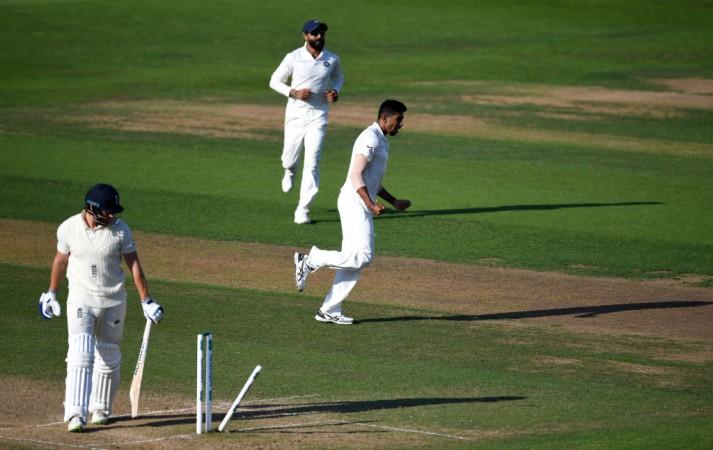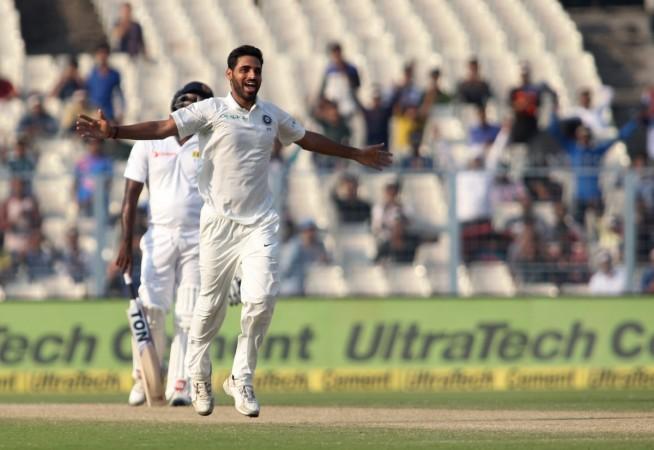India are no more an infallible batting unit but the Asian giants' bowling attack, especially the pace battery is gaining the respect of the opposition, pundits, and fans.
The pace quartet of Ishant Sharma, Umesh Yadav, Mohammed Shami, and Bhuvneshwar Kumar showed a lot of promise during the long home season of 2016/17 where Virat Kohli's men decimated visiting teams.
Indian pace attack lived up to the heightened expectations in South Africa earlier this year, helped the team pick up 20 wickets in each Test — something that the previous touring sides were unable to do on a regular basis.
With Jasprit Bumrah joining the attack, the pacers from the touring side were as impressive as the Rabadas, Philanders and the Morkels.
In the ongoing English tour, despite missing Kumar, one of the best swing bowlers going around, India have managed to shine. With improved fitness and remarkable consistency, the pace attack has been relentless in troubling the English batsmen.
Former India pacer Lakshmipathy Balaji, told International Business Times, India he is certainly proud of the way the fast bowlers have operated on overseas tours this year.
However, the 36-year-old, who was part of a top-quality Indian attack under Sourav Ganguly, says he wouldn't call the current crop India's best ever.
Here are excerpts from the interview
IBTimes: What are your thoughts on the current crop of Indian pacers and their recent overseas performances?

Balaji: What do you say! This is the best bowling performance I have seen in the last 10-15 years. Picking 20 wickets (every match) overseas, consistently over the last two-three series is not easy. Even though the wickets have been helpful, India have been impressive.
Even the balls were different. When they played in South Africa, they had to bowl with Kookaburra. In England, they have used Dukes.
This is a young attack as well. The average match experience will be around 20-25. Obviously, Ishant has been the leader of the pack with a lot more experience.
They have been consistently delivering. It's a very good sign for Indian cricket, especially ahead of the big Australian tour.
IBTimes: Can you call this attack the best India has ever produced?
Balaji: No, I wouldn't say that. Each era is different from the other.
But you can say that this is one of the best attacks going around. If you compare this bowling attack with the rest of the world, definitely India will be among the top three.
In Australia, Mitchell Starc, Josh Hazlewood, and Pat Cummins are forming a good attack but we cannot compare them with Glenn McGrath, Jason Gillespie, and Brett Lee.
There is no basis for comparison. They are also bowling and getting wickets but you can't say they are the best.
So it's always better to compare cricketers from the same generation.
IBTimes: Are you surprised with the way Jasprit Bumrah has eased into Test match cricket?

Balaji: I have always felt Bumrah is someone who has the skills to take wickets regardless of the form of cricket. With the ball path or the trajectory, he creates a different and difficult angle for the batsmen.
In the previous generation also, we saw similar bowlers like Makhaya Ntini.
Bumrah is being very consistent and not erratic. That's why batsmen are unable to settle against his bowling.
IBTimes: Can India consider Hardik Pandya a proper seam-bowling option?
Balaji: I won't consider Pandya, not right now, as a specialist pacer. He is still a white-ball bowler, he hasn't transformed yet to become a bankable Test match bowler.
Skillsets are different but he has shown good promise in his first two major overseas tours.
However, he is not your No.3 pacer, someone whom you can bank upon and pick an extra spinner.
You need to play five bowlers to bring Pandya into the equation. If you ask me who are the top four bowlers in the team, Pandya wouldn't make the list.
IBTimes: Did we miss Kumar in England? What do you have to say about the variety in this Indian attack?

Balaji: You can't lament about Bhuvneshwar's absence but he would have added a bit more to this attack.
I would have loved to see a left-arm seamer in this attack. England has got the upper hand by having a left-arm seamer as he has created rough by bowling over the wicket. Moeen Ali and Rashid have been able to use it.
Variety is always welcome. Having said that, India have got their own variety. Bumrah, with his angle, Ishant, with his height, and Shami, with his seam bowling, have added variety. They have done well here. You can't ask more from this attack.
India also have a couple of good young pacers in Mohammed Siraj and Rajneesh Gurbani knocking on the selectors' doors. It looks India will have a healthy bowling setup for the next five years. Injuries keep happening, so it's always good to develop young bowlers.
IBTimes: Why do you think India haven't been to wipe out the English tail more often than not?
Balaji: As a bowling unit, you always want to remove the top four or five of the opposition. But when the lower-order batsmen come in with a plan, you need more patience as a bowling unit.
I feel a bowler like Zaheer Khan would have helped in cleaning up the tail. He is one of the best when it comes to old ball skills.
You always bowl to the lower-order with roughly a 60 to 70-over old ball. So that's when you need your old-ball skills.
The likes of Wasim Akram and Waqar Younis were also very good at cleaning up the tail. Bowling with old ball is certainly a different skill.
The old ball might not travel at the same pace as a new one does. It might not bounce as much but you still have to intimidate batsmen push them on the backfoot.
I feel experience comes handy when it comes to handling old balls.










